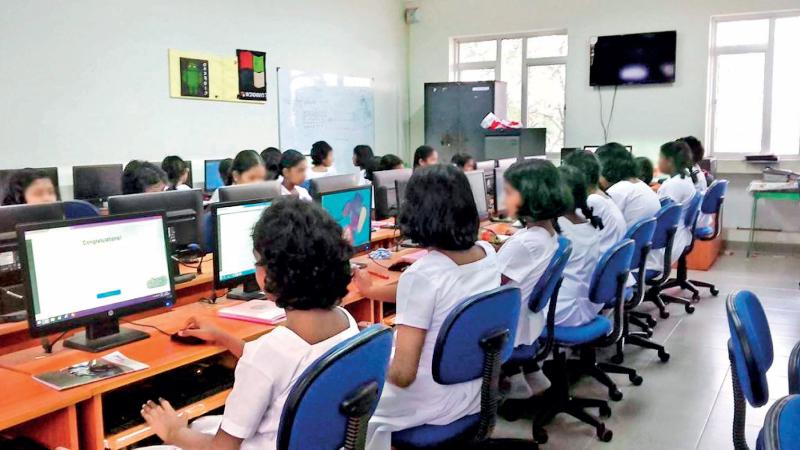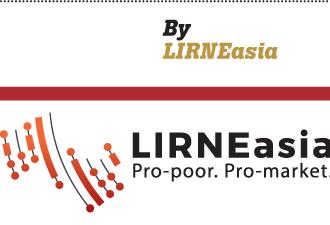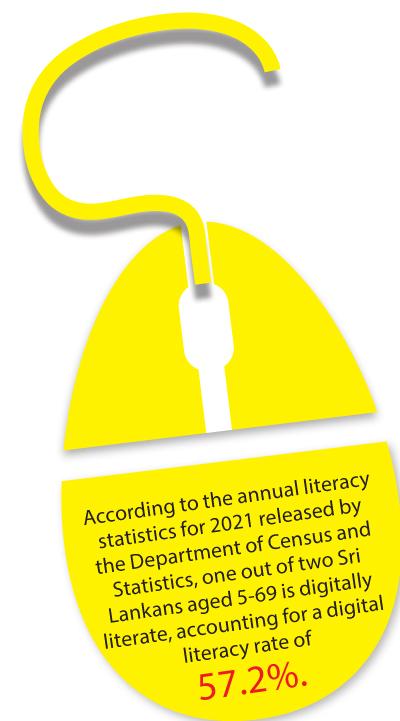06 Jan 2024 - {{hitsCtrl.values.hits}}

By the old definition, an individual would be deemed computer-literate if they could independently use a computer. LIRNEasia’s surveys have shown that smartphones have become the primary gateway to the internet for individuals at the bottom of the pyramid.
|
LIRNEasia, as a digital policy research think tank based in Sri Lanka, has over recent years challenged the outdated and inadequate definition of computer literacy used by the Department of Census and Statistics of Sri Lanka (DCS). In a welcome move, DCS and the Information and Communication Technology Agency of Sri Lanka (ICTA) have collaborated to refine the definition of digital literacy and update assessment criteria. This decision was made by a 13-member consultative committee jointly headed by LIRNEasia Chair, and former ICT Agency (Sri Lanka) Chair, Professor Rohan Samarajiva, and Associate Chief Digital Economy Officer, ICT Agency of Sri Lanka, Sameera Jayawardena.
 Shortcomings of the Old Definition
Shortcomings of the Old Definition
According to the annual literacy statistics for 2021 released by the Department of Census and Statistics, one out of two Sri Lankans aged 5-69 is digitally literate, accounting for a digital literacy rate of 57.2%. However, the earlier definition for digital literacy underscores the increasing significance of technological proficiency in a predominantly service-driven economy. The earlier definition, as LIRNEasia has previously argued was inadequate and excluded the many Sri Lankans who access the internet through smartphones, as many of our surveys have shown.
By the old definition, an individual would be deemed computer-literate if they could independently use a computer. LIRNEasia’s surveys have shown that smartphones have become the primary gateway to the internet for individuals at the bottom of the pyramid. Platforms like Facebook and Google consistently register most of their traffic from mobile devices.
Sri Lanka’s DCS survey questions were outdated. Moreover, their statistics failed to explain the peculiarly small gap between individual computer literacy and the household ownership of computers. In light of the opportunities offered by platform-enabled work, as highlighted in our research on digital platform-enabled gig work in India, Myanmar, and Sri Lanka, we emphasised that digital literacy and adaptability are integral competencies for success in these evolving digital labour markets.
Highlighting the potential consequences of neglecting this issue, LIRNEasia cautioned that Sri Lanka could fall behind, risking a failure to meet the previously forecasted 45% target for computer literacy. Such a setback could have far-reaching implications on the country’s long-term economic prosperity and its pursuit of sustainable development goals. LIRNEasia’s stance emphasised the need for the DCS to undertake more comprehensive work to establish a standard definition that serves as a reliable and useful indicator.
 Fresh Perspective on Digital Literacy
Fresh Perspective on Digital Literacy
The ICT Agency and DCS have recognised the necessity for aligning the digital literacy definition with global standards. This alignment is deemed crucial for creating a digitally literate country and addressing relevant data needs. The consultative committee, comprising experts from the industry, statisticians, academia, and stakeholders, worked collaboratively to refine the definition and assessment criteria of digital literacy.
After evaluating various initiatives to measure digital literacy, the committee unanimously agreed to adopt as the base of its work the UNESCO Institute for Statistics 2022 Report on Measurement Strategy for SDG Global Indicator 4.4.2. The working definition of digital literacy adopted from the UNESCO workstream is: “the ability to access, manage, understand, integrate, communicate, evaluate and create information safely and appropriately through digital technologies for employment, decent jobs and entrepreneurship. It includes competencies that are variously referred to as computer literacy, ICT literacy, information literacy and media literacy.”
Recognising the constraints posed by a lengthy questionnaire administered to multiple household members, the committee opted for a parsimonious approach to question design. They critically evaluated existing questions and anchored the new ones in a well-thought-out and broadly consulted effort.
Digital literacy questions will continue to be incorporated into the annually conducted Labour Force Survey, as has been the practice for many years. While the Labour Force Survey offers a low-cost modality, the digital literacy questions come at the end of a lengthy questionnaire. To address potential respondent fatigue, it was decided that the questions be limited to a maximum of two or three. They must be understandable to both field staff and respondents in Sinhala and Tamil, compatible with the Computer Assisted Personal Interview (CAPI) method used by the DCS, and designed to generate actionable insights.
The digital literacy rate stands as an important metric, signaling a country’s preparedness for the digital age. In an economy such as Sri Lanka’s, where industries are increasingly getting intertwined with technology, a refined digital literacy rate significantly enhances the effectiveness and output of different sectors.
Log on to https://lirneasia.net/for our previously published work relating to digital literacy.
06 Jan 2025 34 minute ago
06 Jan 2025 1 hours ago
06 Jan 2025 1 hours ago
06 Jan 2025 1 hours ago
06 Jan 2025 2 hours ago